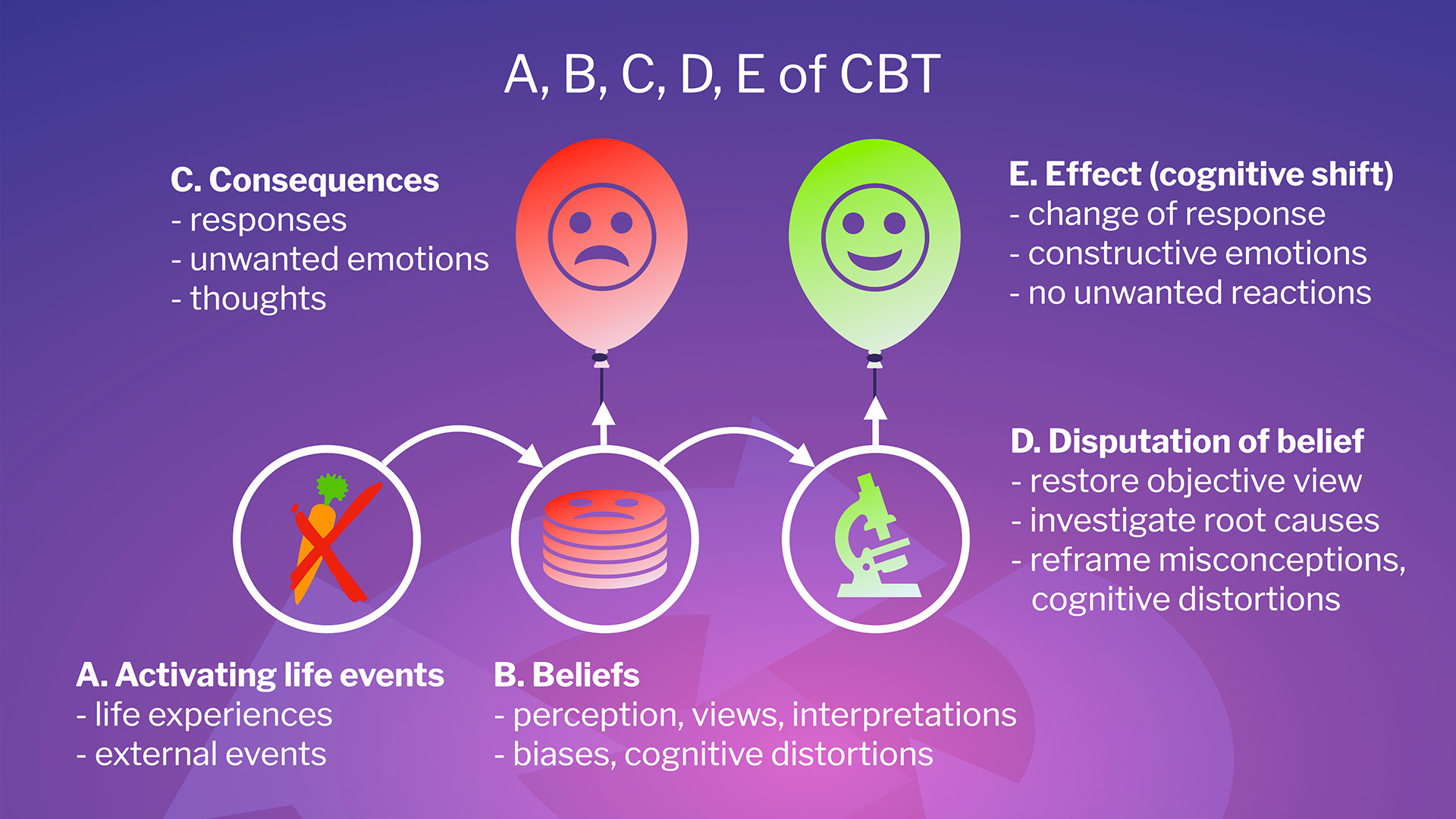How do you train your mind to prevent unwanted responses? Address the root causes of destructive emotions, thoughts, and mental states. Prevent them from growing into stress, burnout, and anxiety.
Science tells us the root causes of our responses are not external, they are inside. Our beliefs create our emotions, thoughts, and mental states.
The A, B, C cause-and-effect model is one of the foundational ideas of Cognitive Behavioral Therapy (CBT).

What it says is:
- Activating life events (A) trigger our Beliefs (B)
- our Beliefs cause our responses, the Consequences (C).
A. Activating life events are our experiences, events, external conditions, relationships, and circumstances.
B. Beliefs are our perceptions, views, interpretations, judgments, cognitive biases, and distortions.
C. Consequences are destructive and constructive responses, emotions, thoughts, and mental states.
For example, I receive critical feedback on a 1:1 with my manager.
- A, the activating life event includes the manager’s feedback, her behavior during the meeting, my work situation, and state of mind before the meeting
- B, beliefs: if dysfunctional, they may cause a distorted interpretation – like it was a personal attack, someone is doubting my work and ability!
- C, the consequence of such misguided beliefs will be a negative, defensive reaction. For example, I may get offended, discard the feedback, and make excuses.
If my beliefs were objective and considered the manager’s perspective, my response could be different.
Let’s use empathy and try to take the manager’s perspective.
I am now the manager. I was told to cut the underperforming staff by my boss. One of my direct reports can improve his work and avoid being fired. So I meet with him to help. Emotionally, I am both worried about him not hitting the targets, and irritated by my inability to share the reasons for the extra attention. The meeting does not go well, he becomes defensive instead of constructive.
Please mind that any perspective-taking will still be influenced by your personal biases. How you would act and feel in such a situation, not the other person. So take it with a grain of salt.
Two takeaways:
- With a bit of self-awareness and impulse control, I could have managed to hear the manager
- It would be nice to review my impulses and insecurities that cause them – so I do not have to fight through them next time
How to change responses
CBT provides a D, and E in addition to the A, B, C model we reviewed earlier.

We can D, Dispute the beliefs to change the response, get E, the Effect, cognitive shift.
D. Disputation of beliefs:
we analyze root causes, reframe beliefs to clear misconceptions, and restore objective views.
E: The Effect, cognitive shift
Updated beliefs bring about a new, constructive response that is rooted in objective views.
Let’s unpack this for our critical feedback example.
So I got carried away by my impulses, and the offense consumed me during the meeting.
I continued fueling my negative emotions after the meeting too. I came to my senses only after I left the office.
D. Disputing beliefs
I managed to step back from a situation, and recognize it was my insecurity that got the better of me. I look at the situation from a new perspective:
- the manager did not attack but tried to help me.
- I am not beating myself for the imperfections of my work but using the opportunity to learn and treat myself with compassion.
E. The effect, cognitive shift.
Now, when I think about the situation negative feelings no longer arise. I am calm and can engage with the situation constructively. Restore good relationships with the manager and make use of the feedback.
The successful cognitive shift leaves no causes for the unwanted reaction. You get the freedom to choose a response. Act with creativity, critical reasoning, and compassionate motivation.

